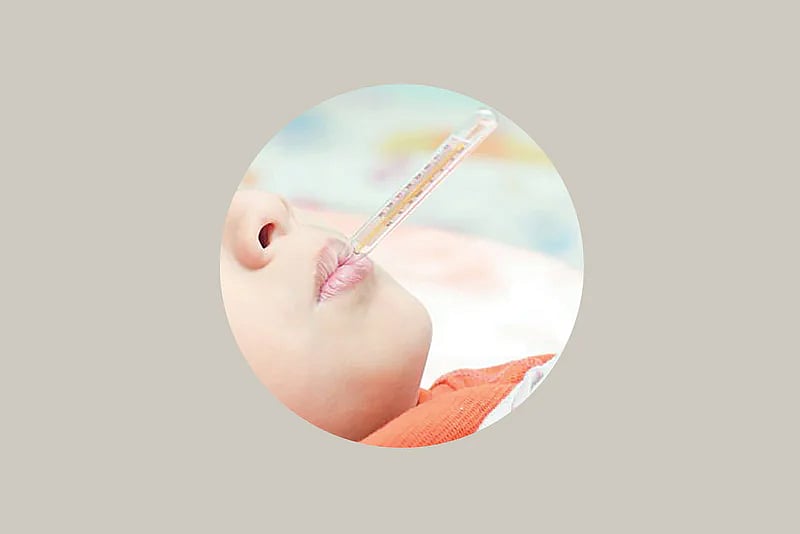College student Deeptojyoti Basu came down with fever on 1 October. First he was tested for dengue when the fever didn’t go away in the first four to five days. The test results came negative.
A couple of day later, he was tested for Covid and the results were negative again. Deepto was growing weak. Meanwhile, he started having abdominal pains and diarrhoea along with fever.
On 17 October, Deepto was admitted to Khidmah Hospital, a private hospital in the capital’s Khilgaon. He was tested and diagnosed with paratyphoid.
Deepto lives at Notunbag-Lohar Gate area in East Rampura. On Saturday, Deepto’s parents told Prothom Alo that many of the residents in their area were falling sick with fever, diarrhoea, jaundice and typhoid.
“The symptoms of typhoid and paratyphoid are the same. Both are water-borne diseases.”ABM Abdullah, professor emeritus of Bangabandhu Sheikh Mujib Medical University
Typhoid is going almost unnoticed, because of the seasonal fever, Covid and dengue. Researchers however say that many people are regularly being affected by typhoid in Bangladesh.
Typhoid and paratyphoid both are water-borne diseases. Typhoid is caused by a bacterium called Salmonella Typhi while the bacterium behind paratyphoid is called Salmonella Paratyphi.
ABM Abdullah, professor emeritus of Bangabandhu Sheikh Mujib Medical University told Prothom Alo, “The symptoms of typhoid and paratyphoid are the same. Both are water-borne diseases.”
Patients get fever. For the first one week the fever patients suffer from constipation but it turns into diarrhoea later. They get abdominal pains and lose their appetite. If not treated in time, the risk increases manifold.
At Notuunbag-Lohar gate area
Visiting Notunbag Lohar Gate area in East Rampura on Saturday, it was found that the work of road reconstruction was going on there. The work started about two months ago.
Locals said, since the road reconstruction work started, there has been a rise in fever, diarrhoea, jaundice and typhoid in the area.
The shopkeeper of a drugstore named Adnan pharmacy said, the sales of fever, diarrhoea and jaundice medicines has escalated in recent times.
Employees of Meem Model Pharma and Department Store said, sales of medicines for fever and different stomach ailments have increased in the past two months. Antibiotics are selling the most.
Sources from a hospital said, they have provided treatment to three typhoid patients recently.
A total of 196 families live in the 196 flats of one of the popular residential complexes in the area is ‘Shobujbon Noor Tower’. Sarowar Jahan is a trader, who lives in the complex with his five-member family.
“At least 60 per cent of the families are suffering with this problem.”AKM Yasin, general secretary, Shobujbon Noor Tower Flat owners’ Association
The businessman himself is suffering from fever. Showing the diagnostic test results he said, his three-year old son tested positive for typhoid. The report mentions about Salmonella Typhi.
Some residents of the tower have said, there are fever, diarrhoea, jaundice or typhoid patients in almost all the families. Some said there are typhoid patients in 75 per cent flats.
Shobujbon Noor Tower Flat owners’ Association general secretary AKM Yasin told Prothom Alo, his wife and son had been diagnosed with typhoid. His son has returned home after recovering but his wife is still in the hospital.
In response to the question of how many families have typhoid or paratyphoid patients AKM Yasin replied, “At least 60 per cent of the families are suffering with this problem.”
Locals of the area believe, the problem arose from water supply pipes getting mixed up with sewerage pipelines during the road reconstruction work.
Local resident Tanvir Mahmud told Prothom Alo, he has informed WASA about the water, but there has been no solution.
How big is the problem
About 550 children were admitted to Bangladesh Shishu Hospital and Institute (Dhaka Shishu hospital) on Saturday afternoon.
Deputy director of the hospital, associate professor Probir Kumar Sarkar told Prothom Alo, there are 30 typhoid and paratyphoid patients among the admitted children.
He also said, the larger part of these children is from Adabar area. There might be a problem with the water in that area.
A team of scientists and researchers from UK, the US, South Korea, Pakistan, Bangladesh and Nepal is working on the incidence of typhoid and paratyphoid in Bangladesh, Pakistan and Nepal.
Their research article was published in the public health journal ‘Lancet’ last July. It stated that the propensity of typhoid and paratyphoid is the highest in Bangladesh, out of these three countries.
That research squad includes scientist and the director of Dhaka’s Child Health Research Foundation director Senjuti Saha.
While talking to Prothom Alo she said, “People get affected with typhoid and paratyphoid in Dhaka city more or less throughout the year.”
“It needs to be investigated why there has been a sudden outbreak of this disease in that specific area (East Rampura Notunbag-Loghar Gate) of Dhaka,” she added.
What’s to be done
ABM Abdullah said that water, liquid food or fruits carry the bacterium of this disease. It’s safe not to eat fruits or foods from the streets. And, if there’s any doubt regarding water, it should be boiled before drinking or using for other purposes.”
Even though death in typhoid or paratyphoid is not so common these days, it should not be downplayed, commented Senjuti Saha.
She said, “A person suffering from this disease cannot go to work for a long time while affected children miss school for many days.”
On the other hand, these patients occupy hospital beds for quite a long time and this creates a pressure on the health system. Therefore, it’s vital to ensure safe water supply for everyone so that they don’t get affected by this disease, she added further.
